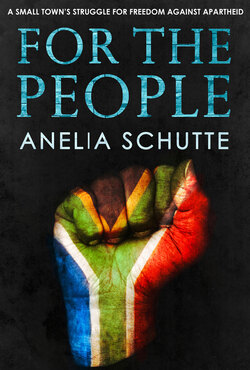Читать книгу For The People - Anelia Schutte - Страница 12
ОглавлениеChapter 2
Back to my childhood
My parents have given me the option of sleeping in the garden flat, which has a separate entrance from the main house. Whenever my brothers and I are here at the same time, there’s a mock-debate over who’ll get to stay in the flat, the most private and only en-suite room at my parents’ house. All three of us know that my oldest brother and his wife will always be first in line and I, as the youngest, will always be last. This time I’m here alone, giving me first dibs on the prize room.
Despite the rare opportunity to have the flat to myself, I choose to stay in the main house. Without my husband or my brothers here, the idea of walking the short distance from the main house to the flat at night makes me nervous. Especially after hearing my parents’ stories of break-ins and assaults in the neighbourhood.
I’ve decided to sleep in my brother’s old room and work in what’s still known as ‘Anelia’s room’, figuring that writing in my childhood bedroom might help to bring back memories. As soon as I open the bright-red door, I know I’ve made the right choice. My high-school blazer still hangs in the wardrobe, adorned with a row of scrolls sewn in gold thread that remind me of prize-giving evenings and Monday morning assemblies at Knysna High. On the wall next to a full-length mirror, there’s a framed, faded newspaper ad for Barclays Offshore Services, my first work to get published as a professional copywriter. Under the ad there’s a black-and-white chest of drawers and around the room a series of black floating shelves, the only remaining evidence of my black-and-white phase in my adolescent years, when most of my wardrobe was monochrome.
When I turned twelve, my birthday present from my parents was a black-and-white makeover of my bedroom, with some splashes of red (‘Because you have to have some colour, Annie’). My father, more proficient at using a sewing machine than my mother, made me a black duvet cover with white polka dots and red curtains. He also made the black shelves and put them up in the ideal positions for my books, electronic keyboard and speakers.
But one of my biggest reasons for wanting to write in this room isn’t what’s inside. It’s the view outside. I pull the curtains back from the ceiling-height windows and there it is, the Knysna Lagoon with the Heads in the distance.
Below me is our back garden and the swimming pool that we got when I was six. It’s still surrounded by concrete patches where my dad has been intending to build decking for years. Between the garden and the Lagoon there are two more rows of houses and the N2 highway that has brought me home.
I spend my second day in Knysna turning my bedroom into an office.
When my mother worked in the squatter camps in the 1980s, she took lots of pictures to support her appeals for funding. She’s managed to dig out the old slides that she used in her presentations, and I’ve had them printed as a visual reminder of what it was like back then.
Above my desk, I create a collage of the pictures: crèche children with dirty black hands holding plastic cups of whatever juice drink they were given that day. Squatter-camp landscapes with eroded dirt tracks that link shacks made from rough wooden planks and corrugated iron. In one picture, a black woman smiles at the camera from under her headscarf, the newly tarred township roads winding round a hill behind her.
On the wall opposite, once covered in posters of the rock band Queen, I stick the handful of newspaper clippings of Knysna in the 1980s that I managed to find on my last trip here. In one of the few articles that shows my camera-shy mother, she’s behind the wheel of a minibus donated by a national newspaper.
Next to the news gallery, I stick up the beginnings of a timeline. Starting in 1937, when the ‘Knysna Health, Social and Child Welfare Society’ was founded, the timeline has space for any significant events in Knysna and the rest of the country on one side, and anything specific to my mother on the other.
There are far too many blanks, though, reminding me how little I know about my own town’s history and indeed, my own family’s.
When my parents and I sit down to dinner, I ask them to tell me their story.
